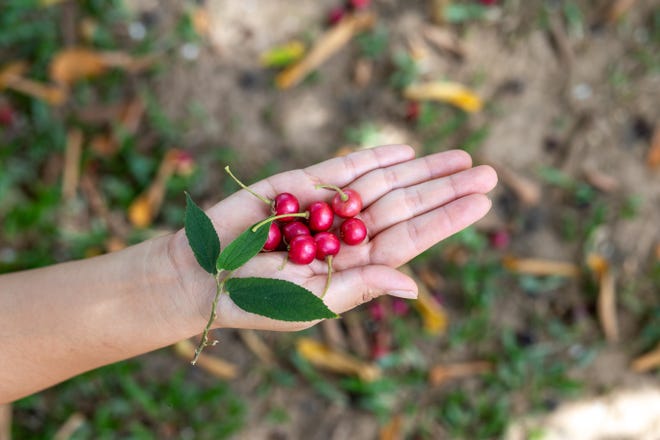CHARLES REYNOLDS: Impatient? There are super-fast fruit trees
Charles Reynolds
Most fruit trees grow discouragingly slowly – but there are notable exceptions, as pointed out by botanist David Fairchild. In his 1947 book ‘’The World Grows Round My Door,’’ he called the papaya the fastest-growing fruit tree in the world.
Indeed, the common papaya (Carica papaya), native to Tropical America, grows at a gallop in sunny, well-drained locations, where it may flower and fruit year-round. Enrich planting sites with organic matter and maintain a deep mulch. An herbaceous, short-lived species, papaya plants feature sturdy trunks up to 12 feet tall topped with distinctive, prominently lobed leaves that may grow 2 feet wide. Their melon-shaped fruit can weigh 20 pounds each, depending on variety. Among varieties are Bettina, Guinea Gold and Hawaiian Sunrise. Propagation is by seeds. Plants and seeds are available online.
Another fruit tree that matures at a gallop is the calabura (Muntingia calabura), a lovely pink-fruited plant that charmed Dr. Fairchild. Known equally well for its speedy growth as for its small, round, sweet fruit, calabura — aka tropical strawberry tree and Jamaica cherry — is native to Tropical America and the West Indies. Up to 30 feet tall in sun, this evergreen, spring-blooming species bears small white flowers and yellow berries that ripen to red. They’re eaten fresh, made into jam and used to flavor tea. Pruning overly lengthy branches is recommended to prevent breakage. Plants and seeds are available online.
The common fig isn’t thought of as a tree, but it can grow to 12 feet in a jiffy and may ultimately become 30 feet tall. Although it’s native to arid areas from Turkey to Pakistan, some varieties – especially Brown Turkey and Brunswick – manage to grow and fruit well in our moist climate. Cold-hardy and deciduous, fig trees do best on well-drained but fertile sites in sun. The species’ spreading branches and large, lobed leaves give plants an exotic appearance. Fruiting occurs in summer and autumn. Propagation is by cuttings of wood that’s 2 or 3 years old. Plants — including dwarf varieties — are offered online.
Other options for rapidly growing fruit trees include tropical apricot (Dovyalis abyssinica x hebecarpa), a large shrub or small tree up to 15 feet tall and wide. It’s hardy to the mid-20s and produces small, yellow fruit with an apricot flavor. Also fast-growing is guava (Psidium guajava), a handsome mid-sized tree that, unfortunately, is extremely sensitive to low temperatures.
Charles Reynolds is a member of Garden Writers Association of America.

